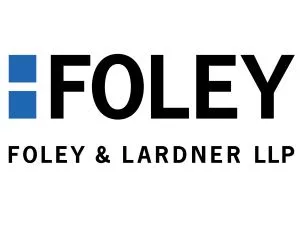- within Coronavirus (COVID-19), Government and Public Sector topic(s)
- with readers working within the Banking & Credit industries
On August 25, 2025, the United States Court of Appeals for the Second Circuit delivered its ruling in EEOC v. AAM Holding Corp.,1 holding that the Equal Employment Opportunity Commission (EEOC) may continue investigating an employee's charge, even after the employee receives a notice of right to sue letter and files a civil lawsuit. The decision could have widespread implications for employment discrimination charges and suits in the Second Circuit.
The EEOC's Investigatory Process
After a charge is filed with the EEOC, the agency investigates the employee's claim with the ultimate goal of determining whether there is reasonable cause to support the charge. In the run of cases, the EEOC reviews a statement of position from the charged employer and may seek additional relevant information by issuing requests for information, conducting witness interviews, or, less commonly, issuing administrative subpoenas or conducting on-site visits to the workplace.
If the EEOC decides not to litigate the charge, it will issue the charging party a Notice of Right to Sue letter (NRTS) signaling that the administrative remedies have been exhausted and permitting the charging party to file a lawsuit.
Factual and Procedural Background
AAM Holding Corp. involved an underlying charge of discrimination filed with the EEOC on behalf of a class of current and former employees of two adult dance clubs in New York City. The employees raised claims of sexual harassment and hostile work environment. Pursuant to its investigation, the EEOC issued administrative subpoenas to the charged employers, seeking demographic information about the clubs' employees. The clubs declined to provide the requested information (arguing that it was both irrelevant and unduly burdensome to produce), and the EEOC successfully petitioned the United States District Court for the Southern District of New York to enforce the subpoenas. The employers appealed the District Court's ruling to the Second Circuit.
While the appeal was pending, however, the EEOC issued the charging party a NRTS, and the charging party filed suit in federal court. Thereafter, relying on a 1997 decision from the Fifth Circuit,2 the employers argued that the EEOC should not be able to enforce the at-issue subpoenas because the agency was "divested . . . of its investigative authority to serve or enforce the subpoenas[,]" when it issued a NRTS and when the charging party filed suit. The EEOC disagreed, citing Seventh3 and Ninth4Circuit case law for the proposition that the EEOC's authority is not extinguished by the NRTS, or even by the charging party's civil suit.
The Second Circuit's Holding and Its Implications
The Second Circuit sided with the EEOC, holding that "the EEOC retains its authority to investigate, including by issuing and enforcing subpoenas, after it issues a [NRTS] and the charging party has filed a civil lawsuit." In so ruling, the court reasoned that "[a] central component of the EEOC's role is to pursue the public's interest in enforcing employment discrimination laws even where that interest is distinct from, and may exceed, the private interest of the aggrieved charging party." As such, in the Second Circuit's view, the EEOC's "authority to investigate a charge extends beyond the issuance of a [NRTS]."
The Second Circuit's ruling widens the circuit split over the bounds of the EEOC's authority and expands the possibility that employers may face both an EEOC investigation and a civil lawsuit concurrently. Employers should remain vigilant as this area of the law continues to develop.
Footnotes
1. No. 24:1672 (2d Cir. Aug. 25, 2025).
2. EEOC v. Hearst, 103 F.3d 462 (5th Cir. 1997).
3. EEOC v. Union Pac. R.R. Co.,867 F.3d 843 (7th Cir. 2017).
4. EEOC v. Fed. Express Corp., 558 F.3d 842 (9th Cir. 2009).
The content of this article is intended to provide a general guide to the subject matter. Specialist advice should be sought about your specific circumstances.


